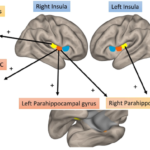Neighborhood Conditions & Childhood Lupus
By Joyce Chang, MD, MSCE
Why was this study done? The environments in which children are born, live, grow and learn influence a wide range of health outcomes. Child opportunity encompasses neighborhood resources and conditions important for healthy childhood development. Differential access to child opportunity may drive disparities in outcomes of childhood-onset systemic lupus erythematosus (cSLE). We examined whether children with cSLE living in areas with lower child opportunity present with more severe disease and are less likely to achieve disease control.
What were the study methods? This was a retrospective study of patients with cSLE cared for at three tertiary care centers between 2016–2022. We linked census tract identifiers to the Child Opportunity Index (COI) version 2.0, a multidimensional, area-level indicator of child opportunity across domains of education, health and environment, and socioeconomic conditions. Mixed effects models were used to estimate associations between COI and primary outcomes of severe disease presentation (high disease activity scores, need for intensive care, or dialysis) and acute care visits during the first year of follow-up, adjusted for age, sex, race and ethnicity, language and insurance status.
What were the key findings? Among 538 patients with cSLE, those living in areas with low child opportunity had 1.9-fold higher adjusted odds of severe disease presentation and twofold higher adjusted incidence of acute care visits, compared to those in areas with very high opportunity. Similarly, patients with cSLE in areas with low opportunity had a substantially lower adjusted odds (OR 0.4) of achieving low disease activity with ≤7.5 mg/day of prednisone, despite adjustment for initial disease severity and disease duration.
What were the main conclusions? Structural inequities in child opportunity may contribute to disparities in disease severity when children with cSLE first present to pediatric rheumatology care, as well as the ability to achieve disease control on lower doses of prednisone, irrespective of initial disease severity.
What are the implications for patients & clinicians? In the care of children with cSLE, it is important to consider the compounded effects of individual family-level factors and local resources or neighborhood conditions. Improving access to timely pediatric rheumatology care for children with cSLE may require tailoring interventions to communities with low levels of child opportunity.
The Study: Chang JC, Liu JP, Smitherman EA, et al. Multicenter study of associations between area-level child opportunity, initial disease severity, and outcomes among children with lupus. Arthritis Care Res (Hoboken). 2025 Aug;77(8):965–974.


